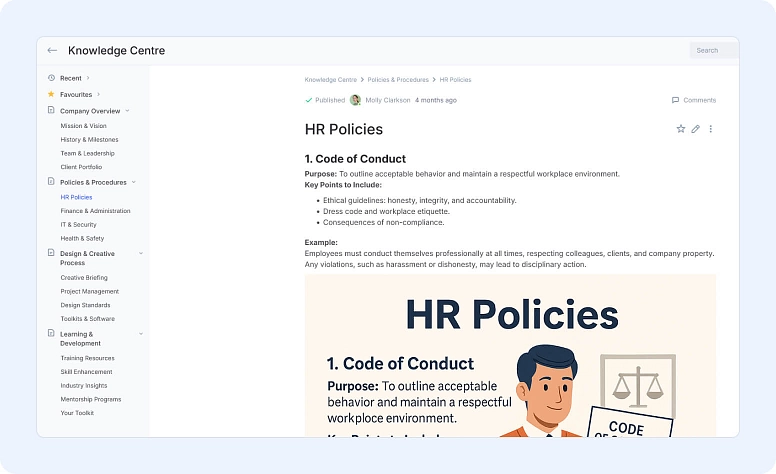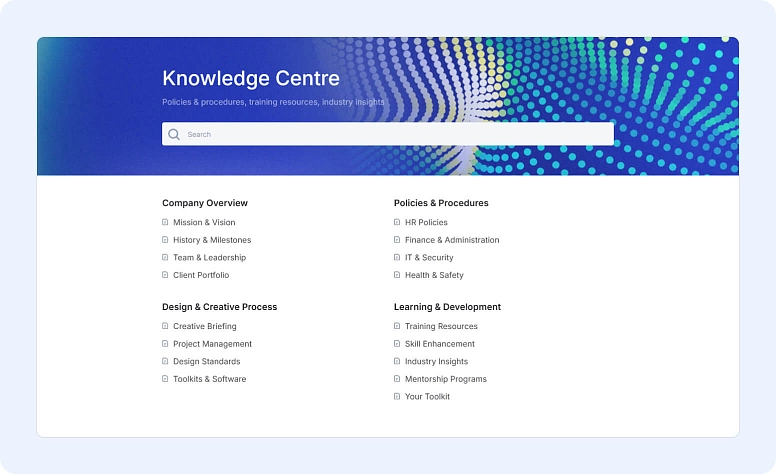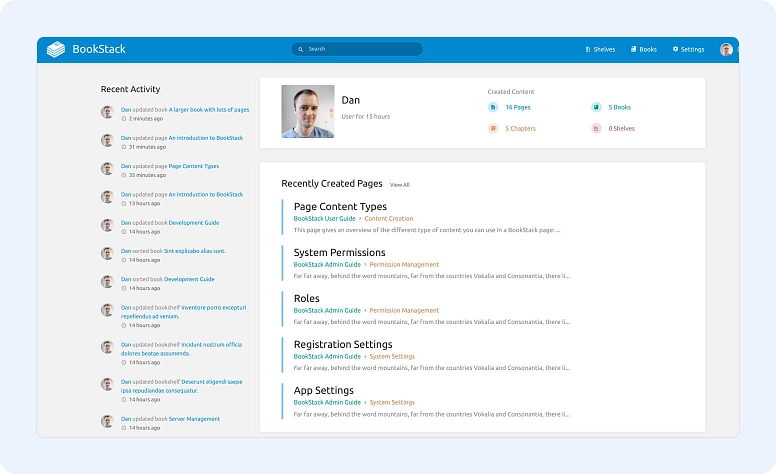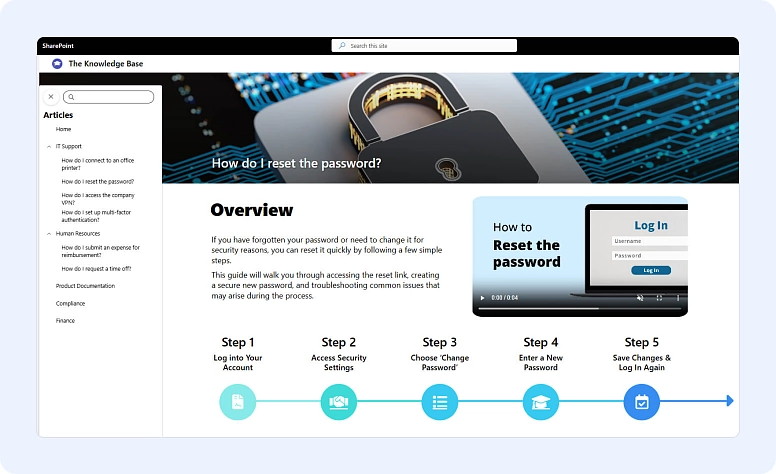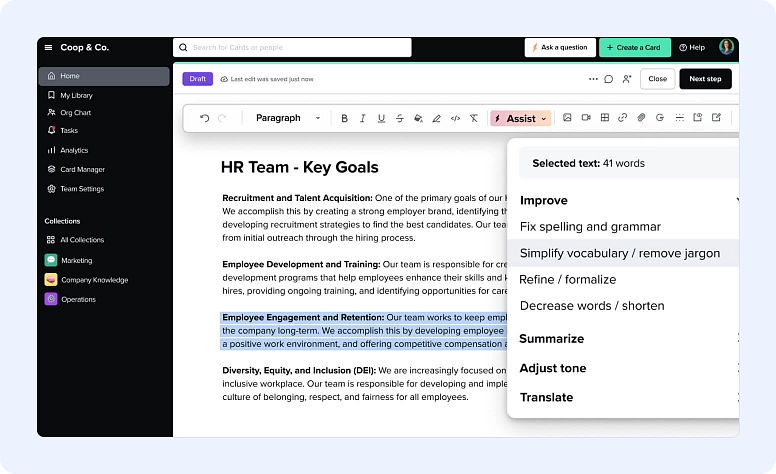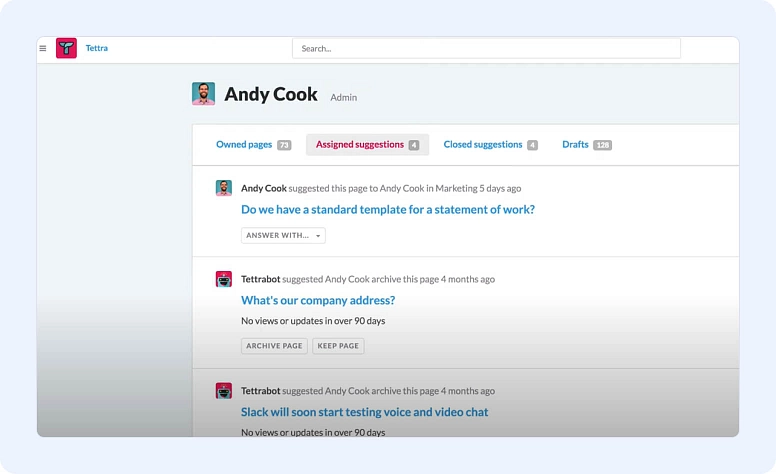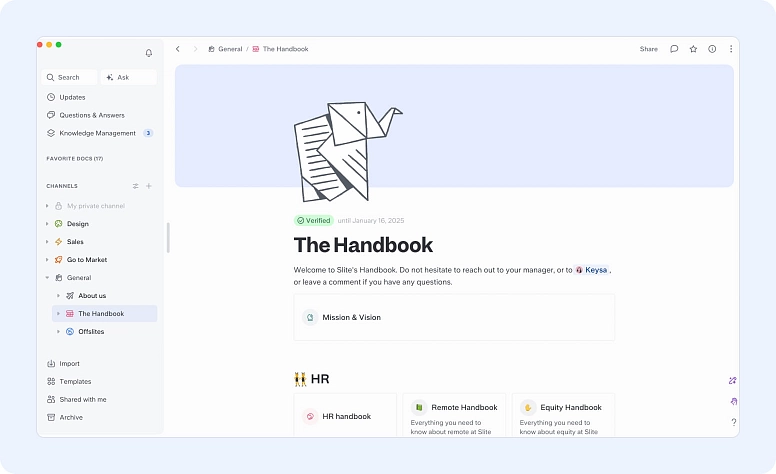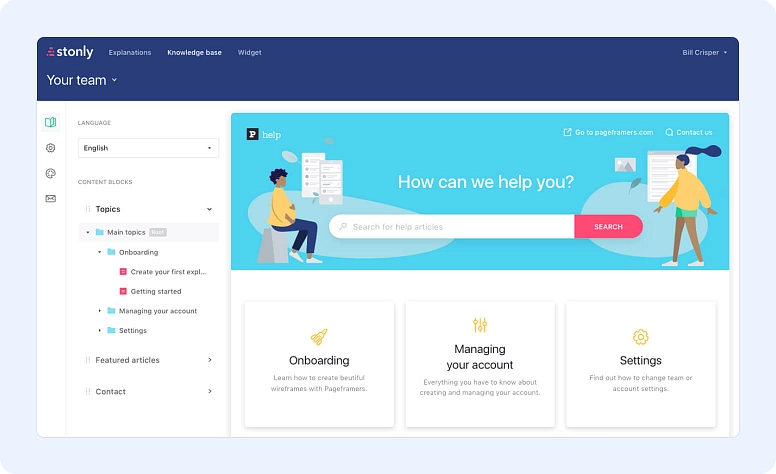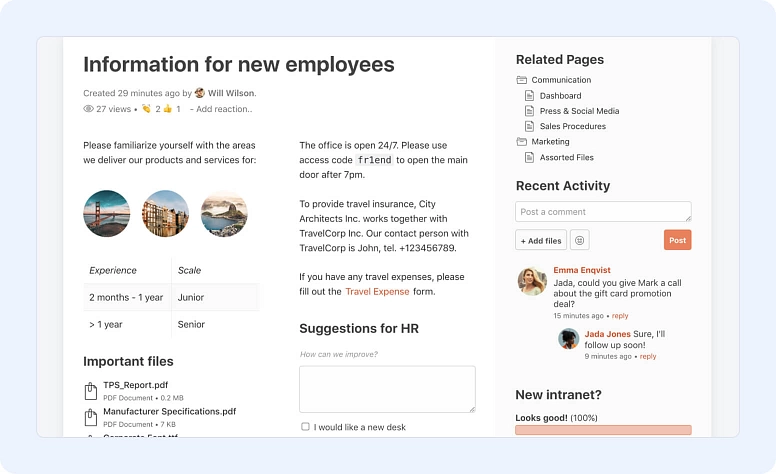Internal Documentation: Best Practices, Examples, and Tools for Building Team Docs
- What Is Internal Documentation?
- 5 Types of Internal Documentation
- Why Are Internal Docs Important?
- Best Practices of Internal Documentation
- How to Build a Documentation System
- Internal Documentation Templates and Examples
- Top Internal Documentation Tools and Software
- Building a Culture of Documentation
As companies grow, they tend to accumulate a wide range of precious information. From best practices to procedures, customer knowledge, or even know-how, the information is spread through docs, archived email threads, across Slack, and many other tools companies use.
In remote or hybrid teams, knowledge often lives in messages or heads instead of systems. If there is no proper team documentation or knowledge sharing culture, companies lose time and productivity every day. Internal documentation helps to keep everyone aligned, even when teams work apart.
Unfortunately, this makes employees have the same doubts and questions every time, not to mention that they keep repeating the same mistakes. The truth is that it’s pretty simple to solve this: you just need to use internal team documentation.
Even though you may be thinking that creating internal docs is a daunting task that will take forever, you can be sure that it brings a lot of benefits.
What Is Internal Documentation?
Simply put, an internal document is a written record of everything your employees need to know about your company. Internal team documentation should include best practices, procedures, guidelines, internal processes, and anything that can help your team get the reference they need to do their job.
Unlike external documentation (such as a user manual, for example) that is distributed to your clients when they buy your product, internal documentation is for team members’ reference only.
Notice that an internal document example can be anything from just text, checklists, diagrams, images, video tutorials, or anything else that makes sense to include.
5 Types of Internal Documentation
As we already mentioned above, there are many different types of internal documentation. Here are the most common types:
#1: Process Documentation
As you can easily understand by its name, this documentation should include the processes, workflows, and procedures of your company. Make sure that you don’t forget to add tutorials, how-to guides, checklists, and even SOPs (standard operating procedures).
#2: Project Documentation
The main goal of this type of documentation is to ensure that everyone understands the project goals and objectives, the overall plan, and the resources that are assigned to it. This type of documentation can be gathered from meetings, proposals, project plans, and business cases.
#3: Technical Documentation
This includes all docs related to products: from source code to development processes, product requirements, architecture, internal infrastructure, FAQs, among others.
#4: HR Documentation
This documentation refers to the materials created by the HR team that are also shared with the rest of the company. It includes HR policies, guidelines for recruiting and screening candidates, onboarding documentation, employee training materials, and handbooks, among others.
#5: Team Documentation
This type of documentation is only valid for an individual team, which means that it doesn’t need to be seen by the rest of the company. Its main goal is to help team members do their jobs, and it can include canned responses, organizational charts, among others.
Why Are Internal Docs Important?
The sad truth is that most companies only realize the negative impacts of lacking internal documentation when it is too late — usually when they step into a crisis that could be easily solved with the use of simple internal documentation software.
Studies show that employees spend about two hours each day looking for the information or the documents they need to finish their tasks. When there is no internal documentation, all this time goes lost, and a lot of important knowledge keeps disappearing inside chats, emails, and folders.
If you’re still not convinced about using internal documentation, here are the main benefits for your company:
#1: Improve Communication & Knowledge
There’s no question that communication and knowledge within the team can improve when using internal documentation. After all, it allows everyone to be on the same page. And whenever a team member has a question, they can simply check the knowledge base. According to recent research, around 46% of employee say they have difficulties to find the information they need to do their job in an efficient way.
#2: Improve Onboarding
Onboarding isn’t always an easy task. But the reality is that the number of companies that actually care about delivering a good onboarding experience is very low. With internal documentation, this can all change. After all, with the right knowledge available, you can have new employees doing their jobs in no time.
#3: Prevent Mistakes
If your team is well aware of all the processes, you can be sure that mistakes will be prevented. This is especially true when you’re building technology products. When you have good internal docs, your employees won’t always need to turn to the responsible engineer; they can solve issues on their own and still avoid mistakes.
#4: Boost Productivity
Whenever a team member has a question, they don’t need to spend time asking their colleagues or their superior. They can simply check the internal documentation and proceed. This helps boost productivity since everyone saves time: the employee who has the question, as well as the co-workers and manager who would otherwise assist. In fact, a recent report found that 83% of employees create again the same files because they cannot find them. When the documentation is well organized, nobody loses time doing the same work two times.
#5: Enhance Learning Experience
It’s important that your company has a documentation process defined, since it can be very helpful in the future. For example, when an employee participates in a project, they should document their learnings. A proper documentation process can help your company avoid making the same mistakes again, as well as help you make the best use of your resources.
#6: Faster Decision-Making
When there is knowledge sharing, there will be faster decision-making. The truth is that many times, a problem needs to arise several times before the company takes action. However, when you’re using internal documentation tools, this time won’t be wasted and the decision can be made immediately. Companies will act quickly.
#7: Easy to Access Information
One of the main advantages of using document collaboration is that everyone within your company will be able to easily access information. Your employees won’t need to spend countless hours looking for what they need in their email, Slack, messages, or any other tools they may be using.
Best Practices of Internal Documentation
#1: Make It Accessible
If you’re utilizing internal documentation software, you always want to ensure that the information is available and accessible to everyone within your company.
When you’re creating a documentation structure, make sure that you use easily identifiable names for the files you create.
#2: Accessible Language
There’s no need to complicate a simple instruction. Instead of using complex jargon, acronyms, and jargon, you should keep your language as simple as possible so everyone can easily understand what needs to be done.
When creating your docs, make sure that they aren’t overwhelming. To prevent this, you may consider using bullet points and section headers.
#3: Use Visuals & Examples
As we mentioned above, internal documentation doesn’t need to contain only text. Sometimes, visuals can be extremely important and make things a lot easier to understand. So, make sure that you add them, as well as examples when necessary.
#4: Details Are Important
When you’re responsible for a specific task that needs to be documented, you’re so used to doing it that you may forget to explain some steps that are crucial. Make sure that you add all the details you can think of. Besides, it’s always a good idea to ask someone who doesn’t know that task to take a look at the document you created and see if they can follow it. If not, you’ll need to be more specific.
#5: Share the Task
Internal documentation shouldn’t be written by just one person. The reality is that it will be a lot better if you ask for contributions. The more familiar an employee is with a task, the better their contribution will be, and the better the document will end up in the internal documentation software.
#6: Unfinished Document
It’s important to keep in mind that internal documentation is never completely finished. Changes occur rapidly in the workplace, and it’s crucial to maintain your internal documentation updated. So, you want to ensure that it’s easy to continue editing your internal docs.
#7: Publish the Internal Documentation
When you complete an internal doc, you need to make it available to all your employees. So, it’s a good idea to have a central knowledge base that everyone can access easily.
As soon as you publish the information, you should ensure that it’s displayed as you want, especially if you included images, videos, or other visuals.
#8: Review Your Knowledge Base
As we already mentioned, an internal document is never finished since things are always changing. So, you want to ensure that you review your internal docs at least once each quarter.
How to Build a Documentation System
Are you ready to start creating your internal documentation? All you need to do is follow these steps to ensure a successful document collaboration:
Step #1: The Key Processes
The first thing you need to do is start by identifying the key processes. Keep in mind that you don’t need to document everything: there may be some random events that don’t need to be included in this document.
Step #2: Come Up with a Template
There’s no question that templates can be a great help when you’re creating internal documentation. After all, you want to ensure consistency across all your documents.
When creating a template, you should make sure to include some key elements:
- The reason the process exists
- The key players in the process
- What supplies or software your employees will need to finish the process
Step #3: Store the Processes
While it’s important to define the processes, it’s equally important to determine where you’ll store them. After all, you want to make sure that your employees can easily access the internal documentation.
Consider creating a central knowledge base that is easily searchable.
Step #4: Clean-Up Time
It’s normal for things to become a bit messy over time. So, it’s essential to schedule some time to ensure that all documents are in the right place and that processes are updated. Consider doing this once each quarter.
Internal Documentation Templates and Examples
To make it more easy to start, you can use some simple templates for different types of internal documentation. The templates help you to keep everything consistent and to be sure that every process or guide has all the important information. Here are some examples that you can adapt for your company.
1. Process Documentation Template
- Title: [Process name, for example “New Employee Onboarding”]
- Purpose: Explain why this process exists and what it achieves.
- Owner: Person or department responsible for this process.
- Steps: List the main steps in the correct order.
- Tools or Resources: Mention any software, forms, or materials needed.
- Last Updated: Add the date of the last revision.
2. Project Documentation Template
- Project Name: [Project title]
- Goals: Short description of the project objectives.
- Team Members: Names and roles of everyone involved.
- Timeline: Key milestones or deadlines.
- Documents and References: Links or attachments that support the project.
3. SOP (Standard Operating Procedure) Template
- Process Name: [What the SOP covers]
- Objective: Why this SOP exists.
- Scope: Who follows this procedure.
- Procedure Steps: Clear, numbered instructions.
- Approval: Name or signature of the person approving the document.
If you want to go deeper into how to create professional SOPs, check our full guide: How to Write a Standard Operating Procedure
If you already use a knowledge management system, you can save these templates inside your knowledge base and share them with your team. If not, keep reading and you will find the best tools to choose for your team.
Top Internal Documentation Tools and Software
When you create internal documentation, having the right tool is very critical. Each platform has its own way to organize, collaborate, and share information. Here you will find some of the best tools that can help your company to keep knowledge clear and easy to access.
1. Flowlu
Flowlu is an all-in-one business platform that makes internal documentation very simple to manage. It has a knowledge base already built inside, so teams can store procedures, HR documentation, company policies, technical documentation, and best practices together with projects and tasks. Everything stays connected in one place, and it helps people find what they need very fast. The tool is very complete, it has built-in CRM, project management, invoicing, workflow automation, mind maps and flexible docs access permissions. Pricing starts from $9 per user/month.
2. Confluence
Confluence by Atlassian is a very popular software for internal documentation among teams. This software teams to collaborate, comment, and edit in real time, which is very useful when several people work together. It integrates perfectly with Jira, so it’s great for developers and product teams. Still, some users find the interface a bit complicated at first, and it can take time to set up. Pricing starts from $6.05 per user per month.
3. Notion
Notion is a flexible and beautiful tool to create any type of documentation. You can build wikis, procedures, or databases using text, images, and tables. It’s very easy to customize, and everything looks clean and organized. However, when there are too many pages, it needs good structure so it doesn’t become confusing. Pricing starts from $10 per user per month.
4. Document360
Document360 is made especially for documentation and knowledge bases. It has a simple editor and lets you organize and track how employees use the content. The interface is modern and clear, and it includes version history to control updates. Still, it has fewer integrations compared to other tools. Pricing starts from $149 per project per month.
5. Nuclino
Nuclino is a simple and light tool that helps teams to collaborate and document everything in real time. It is fast and easy to use, which makes it perfect for teams that don’t need too many features. However, it’s not ideal for big companies that need complex access control or a lot of customization. Pricing starts from $5 per user per month.
6. BookStack
BookStack is an open-source software that organizes content like books and chapters. It’s very good for keeping information structured and clear. You can host it yourself, which gives full control of your data and design. The only point to consider is that you require some technical knowledge for the installation. BookStack is free to use.
7. Microsoft SharePoint
Microsoft SharePoint is a strong and reliable tool used by many big companies. It connects very well with Microsoft 365, and allows teams to store, share, and manage all their documents in one place. It’s safe and full of features, but for small teams it may feel too complex to use it. Pricing starts from $5 per user per month.
8. Guru
Guru works like a smart assistant that keeps company knowledge ready for everyone. It connects with tools like Slack or Chrome, so employees can find answers without leaving their work. The suggestions made by AI help a lot, but it can feel limited for teams that need large document structures. Pricing starts from $5 per user per month.
9. Tettra
Tettra helps teams to share knowledge quickly and stay aligned. It connects easily with Slack and Microsoft Teams, so everyone can ask questions or suggest updates. It is simple and easy to use, but it does not have many options to customize the appearance of the pages. Pricing starts from $8 per user per month.
10. Slite
Slite is a great tool for teams that want to write notes, share ideas, and build internal documentation in one place. It’s clean and modern, with a very friendly editor. It works great for small and medium teams, but when there is too much content, the search function could be better. Pricing starts from $8 per user per month.
11. Bit.ai
Bit.ai lets you create beautiful and interactive documentation. You can insert videos, links, or images inside your pages, making the information more visual and easy to understand. It’s very modern and pleasant to use, but the interface may take a little time to get familiar with. Pricing starts from $8 per member per month.
12. Stonly
Stonly helps you create interactive step-by-step guides instead of static documents. It’s excellent for onboarding and training because it shows each action clearly to the user. It’s very effective, but not ideal if you need long or detailed written documentation. Pricing starts from $83 per month for small teams.
13. Helpjuice
Helpjuice is a complete software to build internal knowledge bases. It has a very fast search, a clean design, and detailed analytics to see how employees use the content. It is powerful and professional, but the price can be high for small businesses. Pricing starts from $120 per month for up to four users.
Building a Culture of Documentation
If your company still doesn’t have internal documentation in place, it’s time to get started. As we showed above, internal documentation is very important and brings a wide range of benefits to your company.
While you may be somewhat scared and don’t know where to begin, just take one process at a time and keep going. Create a template with the elements we mentioned, and ask your employees for help to create and describe processes.
Start today by documenting one simple process and share it with your team. You’ll see how quickly things become clearer and more efficient. If you’re ready to organize everything in one place, try creating your first internal documentation inside Flowlu. It’s fast, simple, and keeps all your business knowledge connected.
Yes, of course. These may include internal document examples such as purchase requisitions, employee timesheets, project documentation, process documents, among many others.
Yes, you can. In fact, you want to ensure that everyone understands what you’re documenting. Sometimes, the best way to do this is by using images, videos, bullet points, and other visual elements.
The best way is to keep all information inside one central place, like a knowledge base or documentation software. It’s important to use clear categories and short titles, so everyone can find what they need quickly. You can also group documents by department or process to make navigation easier. Always keep the structure simple, because when people find information fast, they will actually use it.







